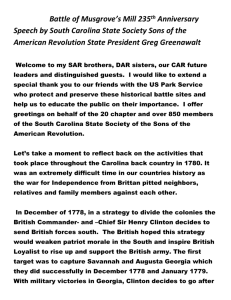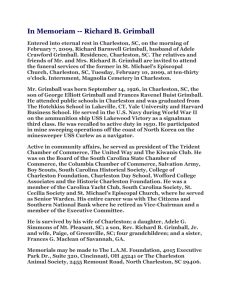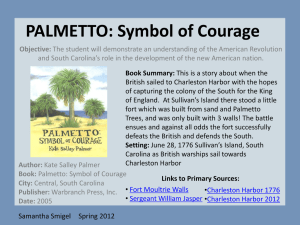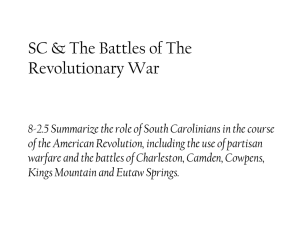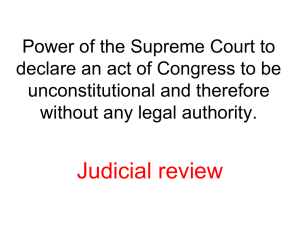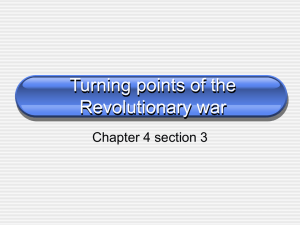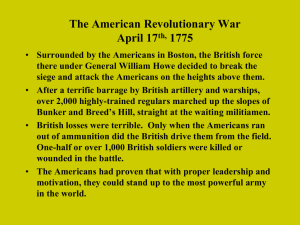Patriots ELA Powerpoint
advertisement
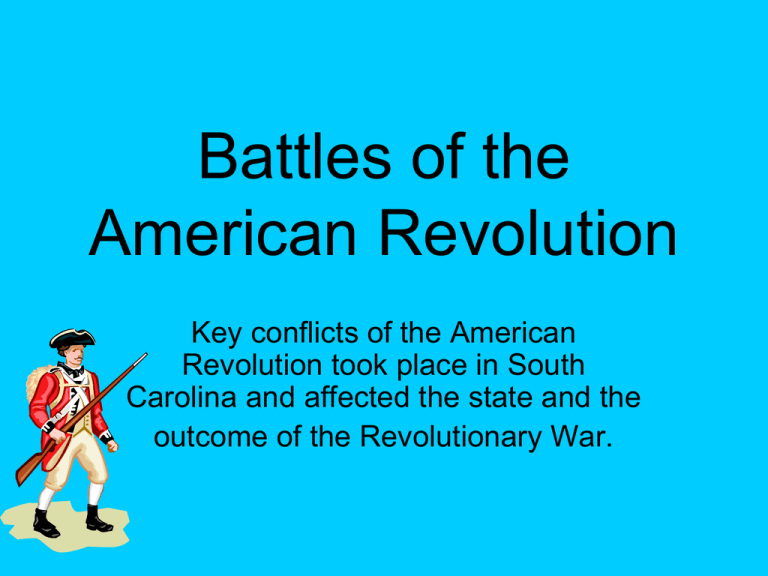
Battles of the American Revolution Key conflicts of the American Revolution took place in South Carolina and affected the state and the outcome of the Revolutionary War. Siege of Charleston • Although the first attempt by the British to capture Charleston was blocked by the tides and the toughness of the palmetto log fort known as Fort Moultrie, the British were successful the second time around. • Soon after their defeat in New York, the British turned their attention to South Carolina, where they hoped to find a large number of Loyalists. • Charleston was under siege by the British land forces for many days. Charleston harbor was blockaded and supply lines were cut off. • Patriot troops, trapped on the peninsula, were forced to surrender to the British. Other Patriot forces in South Carolina also surrendered. Siege of Charleston • The British hoped that South Carolina Loyalists and the large numbers of South Carolinians who remained neutral would help them to control the state and contribute to their winning of the war. • However, the British forces treated the colonists harshly, burning churches, looting or confiscating homes and harassing and mistreating citizens. • This harsh treatment turned many South Carolinians against the British and they formed partisan bands. • Soon Patriot partisans were fighting both the British regular troops and Loyalist forces using hit-and-run tactics. Francis Marion • Francis Marion led partisan troops on the northeast coast. • Marion and his forces launched surprise attacks on the British and then disappeared into the low country swamps earning him the nickname “Swamp Fox.” Battle of Camden • The Battle of Camden was a major defeat for the regular Continental Army and meant almost all of South Carolina was controlled by the British. The South Carolina militia was not prepared and turned and fled in the face of the regular British forces. The Battle of Cowpens • The Battle of Cowpens showed the cooperation of the regular Continental Army and the irregular partisan forces. Partisans had a reputation among the British regular forces of turning tail and running. The American commander counted on this reputation for his battle plan. The partisans, under the leadership of Andrew Pickens, led the attack and then fled the field, tricking the British regulars into thinking that the Americans were retreating. Instead, the partisans lured the British forces into the guns of the regular American army. The British were soundly defeated and retreated northward toward Virginia. Andrew Pickens • Andrew Pickens organized bands of partisans in the Upcountry. • Pickens was named the “Wizard Owl” by Upcountry Native Americans. • Andrew Pickens, led the attack and then fled the field, tricking the British regulars into thinking that the Americans were retreating. Instead, the partisans lured the British forces into the guns of the regular American army. The British were soundly defeated and retreated northward toward Virginia. Kings Mountain • Loyalist forces and British regulars that had been rampaging through the backcountry were stopped at the Battle of King’s Mountain. Mountain men from both North and South Carolina attacked the Tory forces from behind rocks and trees, inflicting heavy casualties. Although the British tried to surrender, they were offered no quarter by the Patriots in retaliation for harsh treatment of Patriots by the British. King’s Mountain is considered a turning point because the British began to retreat from the Upcountry. Thomas Sumter • The British burned Thomas Sumter’s home and he responded by rallying backcountry men into a partisan fighting force. • Sumter’s hit and run guerrilla tactics and his stubbornness earned him the nickname the “Gamecock.” • Sumter’s forces attacked British supply lines and loyalist forces in the Upcountry, giving hope to the Patriot cause.
